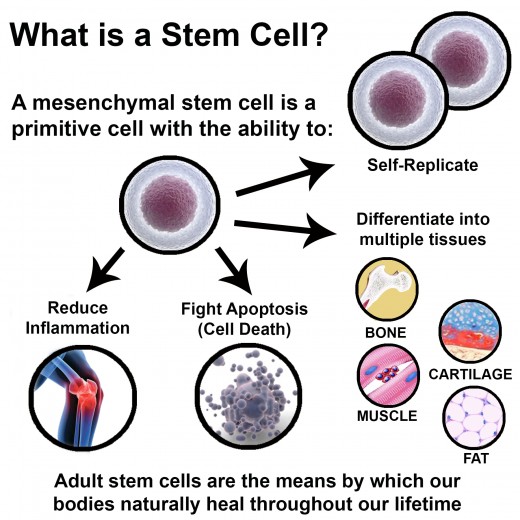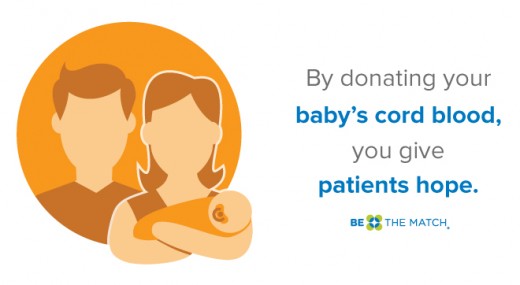Umbilical cord blood banking

Umbilical cord and umbilical cord blood
Umbilical cord - also known as the navel string, birth cord or funiculus umbilicalis - is responsible for carrying oxygen and nutrients from placenta to the baby's bloodstream. It connects an opening on a baby's stomach and the placenta in the womb. It is made of a vein, which is responsible for delivering oxygen and nutrients to the baby, and two arteries, which return carbon dioxide and other waste products to the mother.
Umbilical cord blood - also known as cord blood- is the blood that stays in the umbilical cord and the attached placenta after the baby is born. This blood is rich source of hematopoietic stem cells. These cells are capable of developing into other types of cells so they are used to treat blood, immune system and even inherited diseases. Some of the diseases are leukemia, lymphoma, sickle cell anemia. It is also used to help body recover from cancer treatments like chemotherapy and radiation.
The stem cells can also be collected from bone marrow. This method is used on adults.
Fun fact #1!
Did you know that towards the end of the pregnancy, important antibodies are passed from placenta to the baby? They are passed through umbilical cord and give the baby immunity for approximate 3 months after birth. True, they will only protect the baby from infections and only the antibodies that the mom already has are passed.

Collecting cord blood
There are a lot of reasons why the blood should be collected and stored. For instance, if there are people in your family who already have any of the diseases mentioned above, collecting the blood might help the family member or the child, if this is a genetic disorder. Because of this, some insurance companies might even help you cover the costs, if such treatment is a must.
To begin with, the blood is collected right after the baby is born. Most likely that you will need to sign up for the donation weeks before delivery, still, some hospitals might accept the last minute donation. Then, there will be tests run to check your maternal health and your family history, also, blood sample will be taken to check for HIV/AIDS, hepatitis, etc..
There are multiple ways the cells are collected. The most commonly used is the "closed technique". This particular technique is very similar to basic blood collection. The doctor uses a needle to collect the blood cells from the vein. The needle is attached to a bag in which the cord blood is collected. On average, the total amount of collected blood varies around 75 ml. Afterwards, the blood is tested and cryopreserved - cooled to a sub-zero temperature to avoid damage caused by chemical reactions or time. Later it gets stored in a private or public cord blood banks. For public banking the rules are very strict. There are multiple tests ran to ensure the best possible match for patients in need. Usually those tests will show the actual count of stem cells and the set of antigens (substances that cause immune responses in the body) and prove that the cells are free of contamination and infectious diseases.
The uncommon way of collecting blood is to actively draw the blood out. It can be done with a bulb in a bag creating suction or by using a standard syringe. They use this method to collect bigger amounts of blood in shorter time.
Fun fact #2!
According to most researchers, the odds that a baby will need to use his own cord blood are very narrow. The chances are about 1 in 2700. Although, the owners of a private blood banks say it is 1 in 27, while American Academy of Pediatrics believe that the chances are even smaller - 1 in 200'000. The number varies from one source to another, so it's up to the parents to decide.
Down below you can take a look at a very informative demonstration of "closed technique" collection.
Reasons why blood can't be collected
Even though it seems like all babies are born the same way, there are reasons why the cells just can't be collected.
- The first reason why the public donation will be rejected is multiple births. Since multiples tend to be smaller, there are not enough stem cells in their navel strings to use on adults. Also, there is a greater chance that there could be complications at the birth which make the process harder. Sometimes this does not count for private banking. Some private blood banks will offer a discount and charge for only one collection. You should check it with the banks, the rules may vary.
- The public bank will also decline the donation if the baby is born premature. The reason is similar with multiple births - low stem cell count. Private banks will accept the donation if the doctors are able to collect it.
- Diseases in the family. If any of direct family members like sibling or father has or has had cancer, the donation will most likely be denied. Also, if an insulin that contains animal products is used or the mother has received tissue or organ transplant within the last year.
- Tattoos, piercings - if you got them with non-sterile inks, needles or procedures, there is no way they will accept donation. Think first, act later! Also, if you have lived in a part of the world in which it is common to get blood diseases, since you might not have it, but you could be carrying it.

Umbilical cord banking costs
Banking the blood is not a cheap process. For private blood banking, the collection itself could cost up to $2000, plus you have to pay for the storage. The annual fee is about $100. While the annual fee is not so high, since the blood does save lives, if stored correctly, the blood should only be good for 10 years, it's not like you get to keep it for ever. So if you never use it, it's like throwing about $3000 up in the air. Still, if out of the sudden you need the blood, you can use your private blood at no extra cost while the publicly available blood could cost up to $15'000, so before you make your decision, make sure you check your insurance policy (some may cover this).
It is no secret that there are people who want to get their money back, so they decide to sell umbilical cord blood that they've banked. Personally, I don't know the financial situation of any of those families so who am I to judge, but I believe that it's the wrong way to make money. How unethical and inhuman it is for one to generate income based on someones fatality.
If you decide to store the blood in public blood bank, the chances of the blood actually being used are a lot higher. Plus, it is free (if your doctor waives the fee, so check first)! But there is a downside for this - not all hospitals collect the blood for public banking, so you should check if the hospital that you plan to give birth at does. You could check a list of some hospitals here!
The difference between private and public cord blood banks is very simple. For private - the blood is stored for donor family needs and all the expenses are paid by these families. Private banks are usually for-profit organizations. For public - it is available for anyone who needs it. These are non-profit organizations. Still, you have to pay big money to receive the blood.
Fun fact #3!
Some people believe that the baby deserves all it can take so they perform delayed cord clamping - a procedure in which the navel string is clamped only when it stops pulsing. Some studies have proved that this might help to protect baby from anemia. The collection will not be possible because the blood will already be clotted.
Pros and cons of cord blood banking
Just like with any other action, there are always pros and cons. When making decision, take your time. Do not rush! Even though there might seem to be more cons in the next table, the need for the procedure varies from one family to other.
Pros
| Cons
|
|---|---|
Since cord blood cells are less mature, there is less chance that the recipient's body will reject them. Stem cells can also be collected from bone marrow, but since they are more mature, for example, if you collect them from a 60 year old man, while they are still healthy, there is a chance that they have some unique specifications that will make the recipient's body reject them.
| If you use private blood bank, there is a chance that the blood will not be needed and will never be used. You won't get your money back! You could donate the blood to public blood bank, this will save you a lot of money and there is a bigger chance you will help someone, but once it goes public, there is no other chance to get it back unless the donor becomes a patient and the blood turns up to be a perfect match.
|
The procedure is painless. Neither the mom or the baby can be hurt.
| Recipients body might not accept the blood. The treatment could not work.
|
If you donate the blood cells, you could be saving someones life.
| Even if someone gets any of the diseases that can be treated using the umbilical cord blood, it is not always the right treatment.
|
Helps with research. Even if the blood can't be used on a real patient, it can still be used in research.
| When fighting diseases, using own blood minimizes the risk of being rejected, but in some cases your own blood won't have the right ingredients to fight. Using public donor blood cells can sometimes be more effective to treat cancer, for instance.
|
Usually used to treat children. If you want to use the blood on an adult, there is a chance that there won't be enough. Cord blood has a limited count of stem cells. An average of 2.9 ml of cord blood is needed for every patient's weight kg (1.3ml/lb).
|
Truth - only 60% of the blood collected is actually good enough to help patients. The other 40% are too low in cell count or have some other reasons why it can't be used. This blood is usually donated to researchers to improve the current situation. There is still a lot to research!
What do you think about the procedure? Have you ever done one? Have you been treated with cord blood? Please, feel free to leave a comment below. This topic sure has a lot to talk about!




